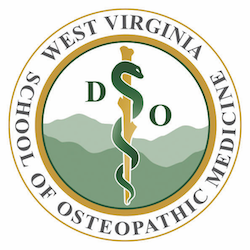The Needle and the Damage Done: West Virginia’s Heroin Epidemic
By Beth Vorhees
West Virginia Public Broadcasting
Editor’s Note: This is one in a series of stories by West Virginia Public Broadcasting, called “The Needle and the Damage Done: West Virginia’s Heroin Epidemic.” You can find the entire series, as well as interactive graphics and sound files at http://wvpublic.org/heroin.
CHARLESTON, W.Va. — Dr. Derek Harman practices family medicine in Logan County. He has been an emergency room physician as well. West Virginia Public Broadcasting asked Harman to describe what it’s like to deal with an opioid overdose from a physician’s perspective.
He got his medical degree in 2008 from the School of Osteopathic Medicine, in Lewisburg, and completed his residency in Virginia, in 2013. He’s a young doctor, but he said he has seen his share of overdoses, not all of them from heroin. Dr. Harman uses the words heroin and opioids in the same breath.
He said that because heroin is a respiratory depressant, people who overdose can have shallow breath and a low number of breaths.
“And you do not have enough oxygen to feed the body,” Harman said. “And usually opioid overdoses and heroin overdoses included, people succumb to respiratory distress and then arrest and then death.

He said it’s crucial to get to a patient who has had an opioid overdose, especially heroin, as quickly as you can because, “They will stop breathing on you.”
Diagnosis
Harman said diagnosing an overdose can be tricky.
“Anytime someone comes into the emergency room, there’s a whole slew of things that you go through,” he said. “It’s very algorithmic.”
Harman said you have to start with basic vital signs and then move on from there.
“You look for track marks. You look for patches,” he said. He explained that addicts sometimes abuse prescription slow-release pain patches that are designed to be tamper-proof. Several are applied to the skin at the same time to produce the same kind of high that taking pills or shooting up do.
“You talk to the paramedics; you talk to family if you have some outside information that can lead to getting a better diagnosis.”
Harman said various other maladies can look like an overdose.
“Someone could have a stroke that could present similarly. Low glucose can present in a very same fashion. But it is a guessing game at the beginning,” he said.
Naloxone
Harman said medication, such as the opioid antagonist Naloxone, is often used to find out whether a patient is actually overdosing.
Naloxone can quickly reverse the effects of an overdose.
Harman said he’s administered Naloxone on many occasions.
“Heroin overdoses are becoming more common and I’ve seen a handful of those, but I see opioid overdoses almost on a nightly basis to some degree,” he said. “It may not be a comatose patient, but it may just be someone that’s in a deep sleep and they’re not waking up as well. They may be respirating very well.”
Noloxone often known by the brand name Narcan, is an injectable opioid antagonist. Harman said that means, “it will go into the body and displaces the opioid from the receptors in the central and peripheral nervous system.”
He said that means that if the opioid is bound to a pain receptor, it will knock off that narcotic or that opioid and bind to that receptor, causing a reversal of the effects of the opioids.
“So almost immediately after giving Narcan within a couple of minutes you should see respirations to come back to normal, or at least hopefully, to a rate that will sustain the patient and it also will increase the patient’s alertness,” Harman said. “The central nervous system and the peripheral nervous system, it blocks all these receptors and allows the patient to kind of wake up again. Again, respiratory distress and arrest are the most important thing. We give Narcan to improve that.”
Follow-up Treatment
But Harman said that it’s not as simple as giving an overdosed patient one shot of Naloxone.
“It is important, however, that the initial dose of Narcan, and it depends on what kind of opioids you’re on and it also depends on how much of the opioid that the person has taken, but that initial dose of Narcan may not be enough,” he said.
Harman explained that Narcan only lasts for about an hour and a half.
“An initial dose of Narcan at home for example, or in the field, is often not enough to overcome the complete dosage of heroin or opioids,” he said. “So these patients if given Narcan in the field, at home, still need to come to the emergency room because those opioids can again reattach to those receptors after Narcan has worn off.”
State law now allows family members or friends to ask a doctor for a prescription for Naloxone.
Dr. Harman said that if someone came to his office worried about a family member addicted to heroin and asked for it, he would definitely write out that prescription.
Being Honest
He was asked what kind of advice he might give an addict who had just survived an overdose patient.
He said it’s common to keep a patient who has overdosed in the hospital for observation so doctors can make sure he or she doesn’t begin overdosing again as the Naloxone wears off.
If the patient is admitted to the hospital, counseling services are available right away. But Dr. Harman said sometimes overdose patients aren’t admitted. That’s when he says he just has to be honest with the addict.
“You just have to be frank with them and say, ‘Look you were lucky and one day, you’re not going to be lucky.’”
Cutline:





